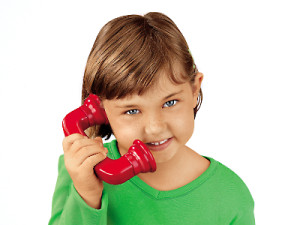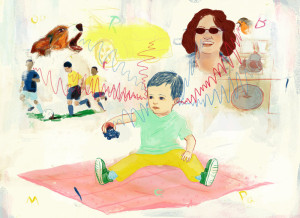 When parents think about their child’s experiences at school, they imagine them sitting quietly in front of the teacher, or at a desk, scanning a book or worksheet. They imagine that if everything is working right, the child has no obstacles to recognizing letters, or shapes or symbols or numbers; that the child understands how to turn pages of the book, and write the letters of his name, and answer a question in an appropriate way.
When parents think about their child’s experiences at school, they imagine them sitting quietly in front of the teacher, or at a desk, scanning a book or worksheet. They imagine that if everything is working right, the child has no obstacles to recognizing letters, or shapes or symbols or numbers; that the child understands how to turn pages of the book, and write the letters of his name, and answer a question in an appropriate way.
Most parents simply can’t remember the process of figuring out how to “be” in a classroom, any more than they can remember what it was like to join a soccer or baseball team for the first time. They also can’t remember how they figured out how to tell the difference between the uppercase letters and the lowercase letters — how do you know that A and a stand for the same letter and sound(s)? Adults have internalized so much that they simply can’t parse out the steps in the process, and feel very frustrated and scared when their kids are lost in this process.
One of the biggest surprises for me as a teacher was when I learned that (early) reading actually depends upon listening, not visual discrimination. If a child cannot hear the difference between the words “big” and “pig”, or “runner” and “running”, it is very difficult for them to assign letters to the sounds, and then use letters to write and spell their own words and ideas. This ability to hear distinct sounds is called phonological awareness. (Hearing sounds is also very much connected to writing.) English is notoriously difficult, because we have several sounds that map to one letter, and some sounds that map to different letters. Example: the “ow” sound can be spelled “ow” as in how, or as “ou” as in trout. But “ou” can map to a different sound, as in the words soul, shoulder, and coupon.
While visual discrimination is another aspect of learning to read, people assume that dyslexia is caused by a problem with seeing the letters, and that dyslexics “flip” letters like b and d. However, the problem lies in auditory discrimination first, well before children are expected to identify letters and words (and sentences).

There was a recent study, done by Nina Kraus et al at Northwestern University, that showed how reading ability is also related to attention. If a child has a hard time distinguishing consonants from other background noise, then they have a hard time developing decoding skills to recognize the symbols of our language. This was tested in a novel way: kids were asked to watch a movie, while a soundtrack with random voices overlaid with the sound “da” was played at the same time. Children who could pick out the “da” sound amidst all the other noise were much better readers than those who couldn’t.
This research was passively recording a child’s ability to hear these sounds; it indicated a neurological process — auditory processing — not a child’s ability to focus or sit still. It measured how well the child’s brain could identify one sound among many sounds. It had nothing to do with a cognitive process.
This test was remarkably accurate at identifying when young children — pre-readers — would have trouble learning to read one year later. It also predicted which children, aged 8 – 14, had diagnosed learning disabilities. To learn more about this research, there is a radio article on NPR with a good explanation.
Children with attention issues very often having learning disabilities, too. Knowing this, and knowing how hard it can be for those kids to learn in a typical classroom, means we want to create different learning environments for them to build these skills. Using assistive technology, whether it’s a simple “phone” like the one pictured at the top of this blog, or something more advanced, such as a classroom FM system, may be very helpful for our young learners. Working with the teacher in the classroom, and again in a quiet environment at home or in a tutoring center, we need to be sensitive to helping these children distinguish sounds, and letters, and build the connections between the sounds and the symbols. This needs to be done at the simplest level — individual sounds and letters — and making sure it is secure before expecting kids to read words and connected texts.
Otherwise, we end up with a very different scenario for a kid with attention and learning problems: inability to distinguish sounds against the busy classroom noises, combined with the frustration of not being able to do what the other kids are doing … leads to very unhappy, disruptive behaviors, and a lack of learning. We can create other learning environments for our kids so that they can keep up and enjoy the classroom experience, quiet or busy.